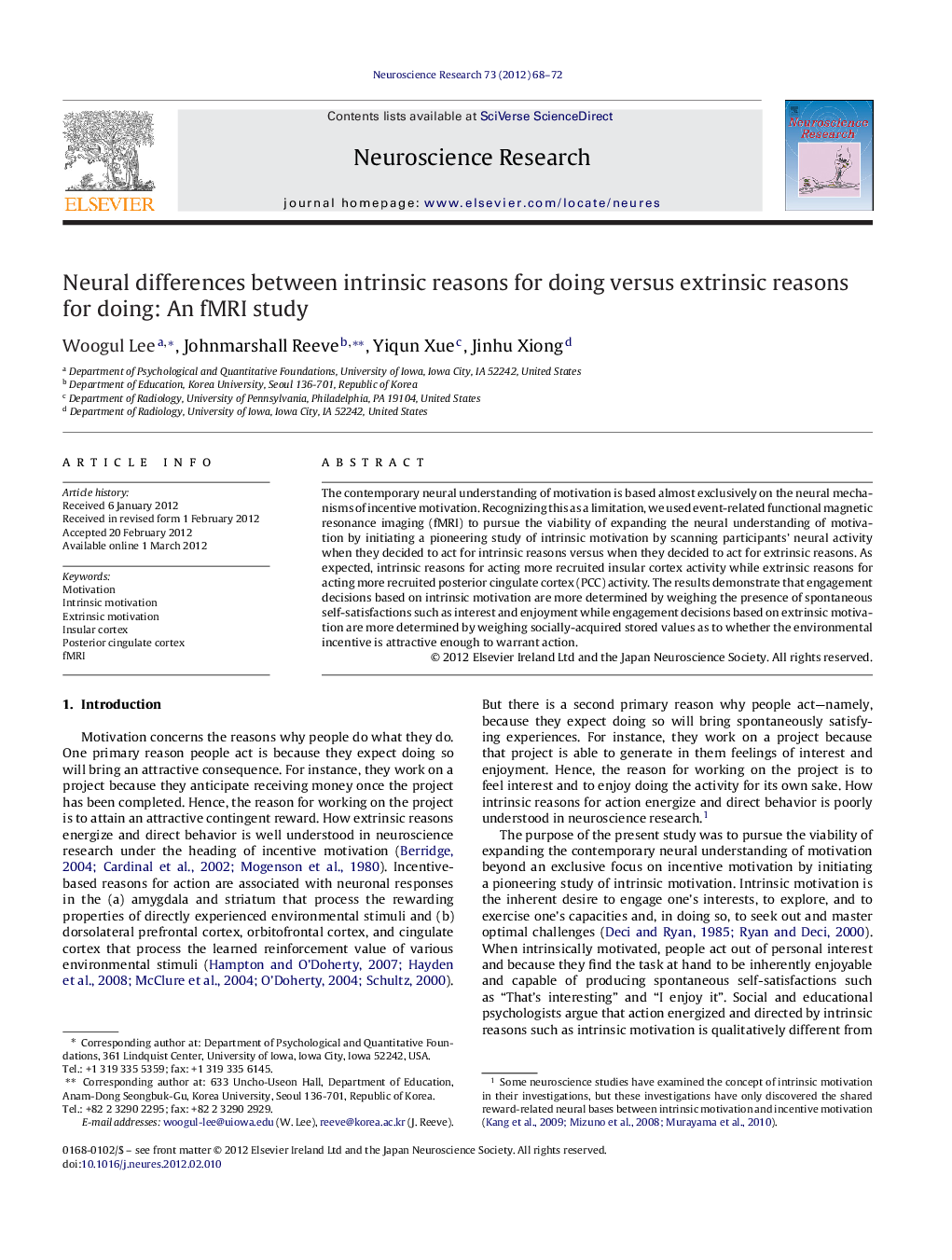| کد مقاله | کد نشریه | سال انتشار | مقاله انگلیسی | نسخه تمام متن |
|---|---|---|---|---|
| 4351512 | 1298058 | 2012 | 5 صفحه PDF | دانلود رایگان |

The contemporary neural understanding of motivation is based almost exclusively on the neural mechanisms of incentive motivation. Recognizing this as a limitation, we used event-related functional magnetic resonance imaging (fMRI) to pursue the viability of expanding the neural understanding of motivation by initiating a pioneering study of intrinsic motivation by scanning participants’ neural activity when they decided to act for intrinsic reasons versus when they decided to act for extrinsic reasons. As expected, intrinsic reasons for acting more recruited insular cortex activity while extrinsic reasons for acting more recruited posterior cingulate cortex (PCC) activity. The results demonstrate that engagement decisions based on intrinsic motivation are more determined by weighing the presence of spontaneous self-satisfactions such as interest and enjoyment while engagement decisions based on extrinsic motivation are more determined by weighing socially-acquired stored values as to whether the environmental incentive is attractive enough to warrant action.
► Pioneering neuroscience study of intrinsic motivation.
► We compared the neural differences between intrinsic and incentive motivation.
► Intrinsic reasons recruited insular cortex activity.
► Extrinsic reasons recruited posterior cingulate cortex activity.
► These findings confirm that human motivation is not singular.
Journal: Neuroscience Research - Volume 73, Issue 1, May 2012, Pages 68–72